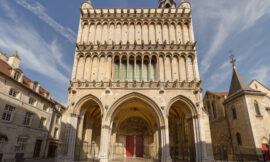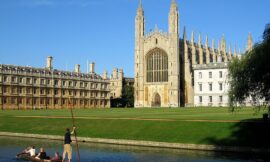Holyrood Abbey, also known as the Abbey of the Holy Rood, holds a significant place in Scottish history and architecture. Situated adjacent to the Palace of Holyroodhouse at the eastern end of Edinburgh’s Royal Mile, this ancient abbey is a striking example of medieval ecclesiastical architecture and a symbol of Scotland’s religious heritage.
Founded in 1128 by King David I of Scotland, Holyrood Abbey was established as an Augustinian monastery dedicated to the Holy Cross, or “Holy Rood” in Old English. The abbey served as a center of religious life and worship for centuries, playing an important role in the spiritual and cultural life of medieval Scotland.
The original abbey complex included a church, cloister, chapter house, and other monastic buildings, all constructed in the Romanesque style typical of the period. Over the centuries, Holyrood Abbey underwent several renovations and expansions, with elements of Gothic architecture added during the 13th and 15th centuries, reflecting changing tastes and architectural trends.
One of the most striking features of Holyrood Abbey is its beautiful west front, which features a richly decorated doorway flanked by twin towers. The doorway is adorned with intricate carvings depicting biblical scenes, saints, and symbols of the Christian faith, showcasing the skill and craftsmanship of the medieval stonemasons who created them.
Inside the abbey, visitors can admire the remnants of the nave, choir, and transepts, which once formed the heart of the monastic church. Although much of the abbey’s interior was destroyed during the Scottish Reformation in the 16th century, some elements, such as the soaring stone arches and delicate tracery windows, still stand as a testament to its former glory.
One of the most famous events associated with Holyrood Abbey is the marriage of King James IV of Scotland to Margaret Tudor, daughter of King Henry VII of England, in 1503. This union marked the beginning of the Tudor-Stuart dynasty and played a significant role in shaping the future of Scotland and England.
Following the Scottish Reformation, Holyrood Abbey fell into disuse and disrepair, with much of its stone plundered for use in other building projects. Despite this, the abbey remains a popular tourist attraction and a poignant reminder of Scotland’s medieval past. Today, visitors can explore the ruins of Holyrood Abbey, marvel at its architectural features, and learn about its rich history through guided tours and interpretive exhibits. As a cherished landmark in the heart of Edinburgh, Holyrood Abbey continues to inspire awe and reverence in all who visit.



